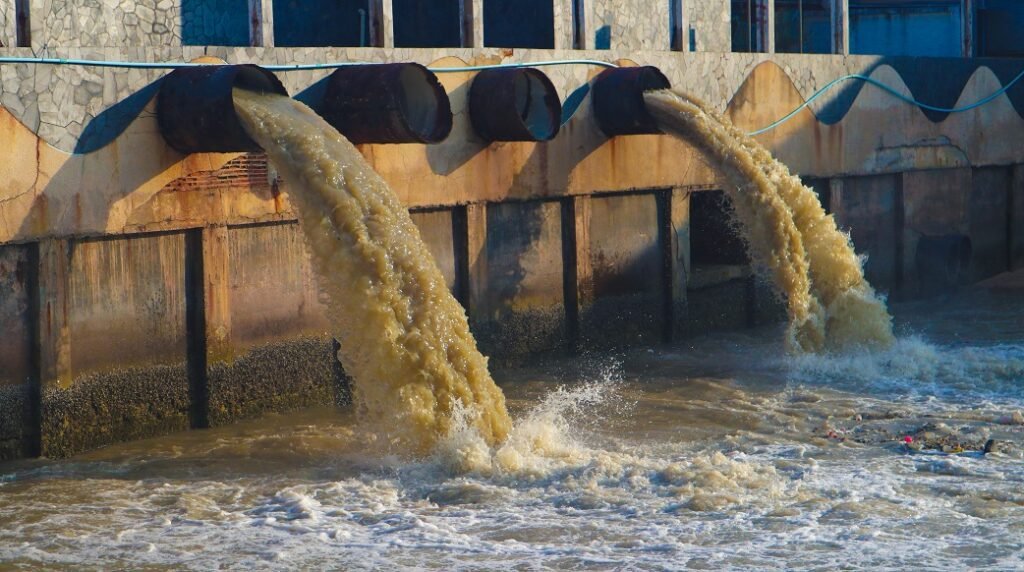On January 10, 2022, the Vietnamese government established the Decree No. 08/2022/ND-CP Detailing a Number of Articles of Law on Environmental Protection 2020 (hereinafter “the Decree”), which came into effect on the same day. Articles 97 and 98 of Chapter 7 of the Decree detail the provisions on the environmental monitoring of wastewater, exhaust gas, and dust, as stipulated in Articles 111 and 112 of the Environmental Protection Law 2020. Under the Decree, continuous automatic periodic monitoring will be mandatory, depending on the type of industry and the amounts of pollutants emitted.
The Decree 08/2022/ND-CP can be downloaded from
https://monre.gov.vn/VanBan/Pages/ChiTietVanBanPhapQuy.aspx?pID=277
Wastewater monitoring
The Annex XXVIII to the Decree specifies the scope of regulated business operation, such as business form, flow rates, measurement parameters, and measurement methods, as summarized as below.
|
No. |
Business form | Flow rate | |
| (A) |
(B) |
||
| 1 | Centralized wastewater treatment systems in manufacturing, trading, and service intensive industrial zones (including facilities that are exempt from connection to centralized wastewater treatment facilities and discharge wastewater directly into the environment) and industrial economic zones | Any discharge | – |
| 2 | Projects and facilities that fall under any of the business forms of production, trade, and service that pose a risk of environmental pollution, as defined in Annex II to the Decree. | 500 m3/day or more
<Flow rate: large> |
200 or more and less than 500 m3/day
<Flow rate: Medium> |
| 3 | Projects and facilities that DO NOT fall under any of the business forms of production, trade, and service that pose a risk of environmental pollution, as defined in Annex II to the Decree. | 1000 m3/day or more
<Flow rate: extra large> |
500 or more and less than 1000 m3/day
<Flow rate: large> |
| Obligation to implement wastewater monitoring | Perform automated AND periodic monitoring | Perform automatic OR periodic monitoring | |
*Annex II mentioned above provides a list of manufacturing, trading, and service forms that may cause environmental pollution. (See related article: Vietnam revises EIA regulations)
Details of the periodic and automatic wastewater monitoring are stipulated as follows:
| Periodic monitoring |
|
| Automatic Monitoring |
|
Exhaust gas and dust monitoring
The Annex XXIX to the Decree stipulates the scope and methods of the mandatory exhaust gas and dust monitoring, such as business form, regulated construction works and facilities, flow rates of emissions, and measurement methods, as summarized below.
|
No. |
Business form |
Flow rate or treatment capacity of dust and exhaust gas treatment works and facilities |
|
|
(A) |
(B) |
||
| I | Projects and facilities that fall under any of the business forms of production, trade, and service that pose a risk of environmental pollution and emit large quantities of exhaust gases or dust must perform continuous automated monitoring and periodic monitoring. | ||
| Fabrication of iron, steel and metallurgy products (excluding rolling, extension and casting from raw materials) | 100,000 m3/hour or more | 50,000 or more and less than 100,000 m3/hour | |
| Manufacture of inorganic chemicals (excluding industrial gases), manufacture of chemical fertilizers (excluding mixing, extraction and packaging), and manufacture of agricultural chemicals (excluding mixing and extraction) | 100,000 m3/hour or more | 50,000 or more and less than 100,000 m3 /hour | |
| Oil refining | 100,000 m3/hour or more | 50,000 or more and less than 100,000 m3/hour | |
| Recycling and treatment of domestic waste, general industrial waste, and hazardous waste; dismantling of end-of-life vessels; and use of imported scrap as raw material for production | Thresholds vary depending on the facility type | Depends on processing facility | |
| Coke production, coal gasification | 100,000 m3/hour or more | Less than 50,000 to 100,000 m3/hour | |
| thermal power generation | Power generation capacity of 50 MW or more | Power generation capacity less than 50MW | |
| Cement production | 100,000 m3/hour or more | Less than 50,000 to 100,000 m3/hour | |
| Other projects/facilities that fall under any of the business forms as specified in Annex II to the Decree | 100,000 m3/hour or more | Less than 50,000 to 100,000 m3/hour | |
| II | Projects and facilities that DO NOT fall under any of the business forms of production, trade, and service forms that pose a risk of environmental pollution and emit large quantities of exhaust gases or dust must only periodic monitoring. | ||
| Projects and facilities that do not fall under any business form as specified in Annex II to the Decree |
– |
50,000 m3/hour or more | |
*Annex II mentioned above provides a list of manufacturing, trading, and service forms that may cause environmental pollution. (See related article: Vietnam revises EIA regulations)
Details of the periodic and automatic monitoring of exhaust gas and dust are stipulated as follows.
| Periodic monitoring |
|
| Automatic Monitoring |
|
 Vietnam: new decree to monitor pollutant emissions under the Environmental Protection Law 2020
Vietnam: new decree to monitor pollutant emissions under the Environmental Protection Law 2020 

























